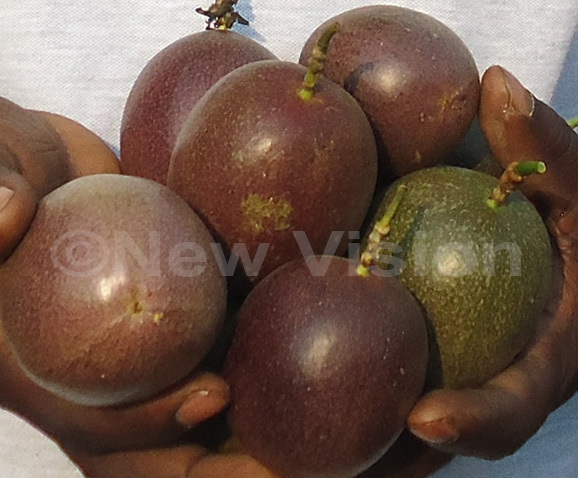Passion fruits, the money maker
Apart from being less capital-intensive, passion fruits also fetch a higher price on the market. “A farmer can grow hybrid varieties or the local breed. Local varieties have a better scent than hybrids.
PASSION FRUITS
KAYUNGA - It is not surprising that an enterprising farmer like Twaha Kakooza of Bubajjwe village in Kayunga district zeroed on passion fruit-growing.
Kakooza owns eight acres of passion fruits; he says passion fruits can be grown on a very small piece of land. The fruit can also be grown anywhere.
"Apart from being less capital-intensive, he says passion fruits also fetch a higher price on the market. "A farmer can grow hybrid varieties or the local breed. Local varieties have a better scent than hybrids", he said.
However, the advantage with hybrid is that it will last more years than the local variety because it is not susceptible to rot and collar rot diseases.
Hybrids also produce more fruits, that is why commercial farmers like Kakooza choose them.
 Some of the passion fruits from Twaha Kakooza's garden. Photo by Umar Nsubuga
Some of the passion fruits from Twaha Kakooza's garden. Photo by Umar Nsubuga
Local varieties are also less capital-intensive as they do not require wires for constructing beds on which the vines creep. On the other hand, hybrids need these beds.
Benon Kisomose, an agronomist says passion fruits are mainly grown from seeds, which can be bought from a farm. Supply shop or better still, the seeds can be got from healthy passion fruit.
According to Kakooza a fruit with a dark purple colour is a sign that it has good seeds. After drying, the seeds are planted in a nursery bed with soil mixed with compost manure.
In the first week, the seedbed should be covered with mulch to provide warmth, vital for germination.
But later, a shelter is erected out of leaves to provide shade for the nursery bed. The shelter should be made in such a way that it allows free circulation of air and the bed must be watered regularly.
Kisomose says after germinating, the seedling should be put into polythene bags, but farmers should ensure they do not over-water the seedlings as this might cause root rot.
After one month, the seedlings should be transferred to the garden. But before transferring them to the garden, holes of three by three feet should be dug a month earlier and manure put in them.
A spacing of eight by eight feet should be followed while planting the passion fruits.
One should avoid leaving a depression at the core root of the plant as this may result in waterlogging and hence root rot.
Kakooza says a trellis made from logs and reeds should be constructed in the garden and strings or wires on which the passion fruit vines can attach themselves and climb on the trellis put in place.
Passion fruits begin to flower at six months after which a farmer can start getting fruits.
One should pick only the fruits that have fallen on the ground, but if the demand is high, harvest the mature purple fruits. To increase the shelf life of the fruit, harvest with its stock.
Six hundred passion fruits can be planted in an acre and a farmer can harvest three to six sacks of fruits per week from an acre if all, goes well. Under good management, passion fruits can last four years.
During this period, a farmer will be picking fruits at regular intervals. The average price of a sack is between sh350,000 and sh400,000 in most markets in the city.